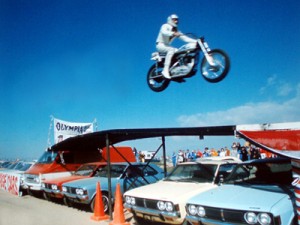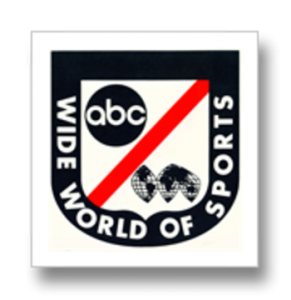Wide World of Sports Changed the Sports Landscape Forever
Sometimes things happen that at the time seem innocent enough, but in hind sight have a far greater impact than could ever have been predicted. Such was the case on April 29, 1961 when ABC aired portions of the Drake Relays from Des Moines, Iowa and the Penn Relays from Philadelphia, Pennsylvania under the title “Wide World of Sports.”
Over the next 37 years, Wide World of Sports “spanned the globe” to showcase the many unique sporting events that people participated in across the world. In an age when most people hadn’t traveled even outside their own state or geographic region, Wide World of Sports gave viewers a weekly trip to an exotic or previously unexplored location.
At a time when these places were generally unavailable for most Americans to travel to, Wide World of Sports showed sporting events from places such as Moscow, China and Cuba.
It also introduced us to sports, individuals and events that eventually became a common part of the American sports landscape.
Today, the Indianapolis 500, Wimbledon, the Daytona 500, the NCAA Men’s Basketball Championships and the Little League World Series all are stand alone sports programs that attract millions of viewers and weeks of coverage. However, all received their first significant national television exposure as part of Wide World of Sports.
As did other events such as barrel jumping, platform (and cliff) diving, professional bowling, demolition derby, gymnastics and body building. The Superstars program, which ran for 10 years, started as a feature on Wide World of Sports.
Such well known sports figures as Muhammad Ali, Evil Knievel, Pele, the Harlem Globetrotters, and Arnold Schwarzenegger owe a portion of their fame to regular appearances on Wide World of Sports.
The regular appearances by Ali, often in an interview setting with Howard Cosell, helped resurrect his career following his federal conviction and three years away from the sport due to his refusal of military service.

Regular appearances on Wide World of Sports was a big reason that Evil Knievel earned cult hero status in the 1970s.
While Cosell was the most controversial announcer on the ABC team, Jim McKay was the true star of the show and anchor of the program for nearly four decades.
A mild-mannered sort, McKay came across as an every-man type, but his personality and wit were often interwoven into the show and kept people entertained even when they sometimes didn’t even realize it.
In addition to McKay and Cosell, other commentators for Wide World of Sports included a virtual “who’s who” of the sports broadcasting world including Al Michaels, Keith Jackson, Bill Flemming, Frank Gifford, Jim Lampley, Curt Gowdy and Chris Schenkel.
One of the greatest attributes of Wide World of Sports was its storytelling style. Because most of the programs were taped in advance, they had the advantage of cutting out the monotonous parts of sports programs and instead show just the best parts. They also had time to dig deeper into the personal stories of the athletes and make you feel like you were watching someone you knew, not just some athlete from across the country or globe.
Wide World of Sports was originally going to serve as a one-year summer program to provide sports programming leading up to football season. However, it proved so popular that it soon became a staple of ABC’s sports programming.
Though the format for Wide World of Sports changed in 1998 and the program officially ended in 2006, it remains an important part of the legacy of sports television and elements pioneered on the program exist in almost every sports show seen today.
Below is the famous introduction from Wide World of Sports:

Since fitting for some time for just a proper read in views to this kinda niche . Essaying in Bing I now spotted this internet site. Looking this information So i am pleased to take that I have a very good imprint I stumbled onto whatever I was quick for. I’ll make sure to don’t forget this internet site and give it a look systematically.
The other day, while I was at work, my sister stole my iPad and tested to see if it can survive a thirty foot drop, just so she can be a youtube sensation. My apple ipad is now destroyed and she has 83 views. I know this is totally off topic but I had to share it with someone!
アメリカンイーグル軽量ダウンジャケット http://coxdesignbuild.com/Images/American-Eagle/4~_201409251606518@–j-8.asp
Itreally a great and helpful piece of information. I glad that you shared this useful information with us. Please keep us up to date like this. Thanks for sharing.